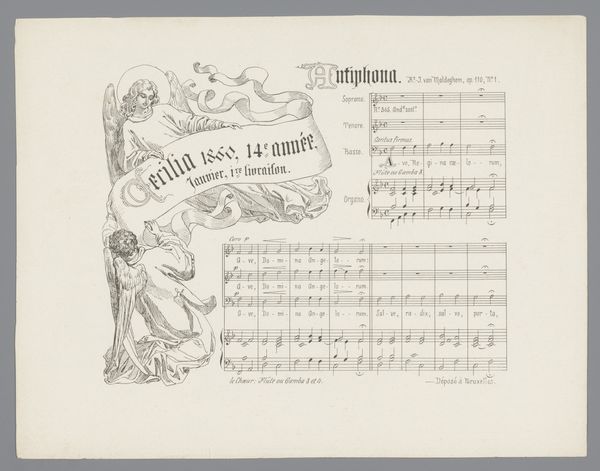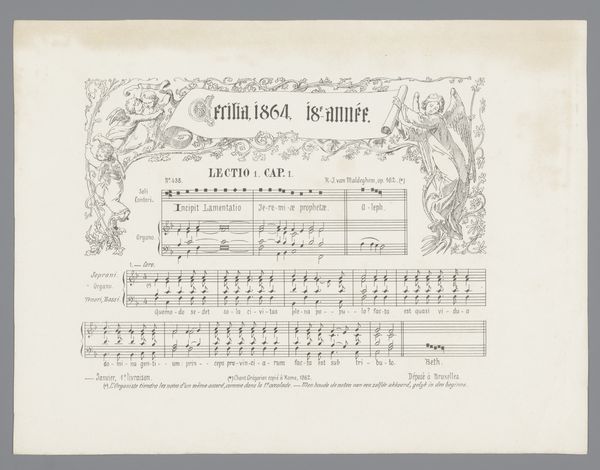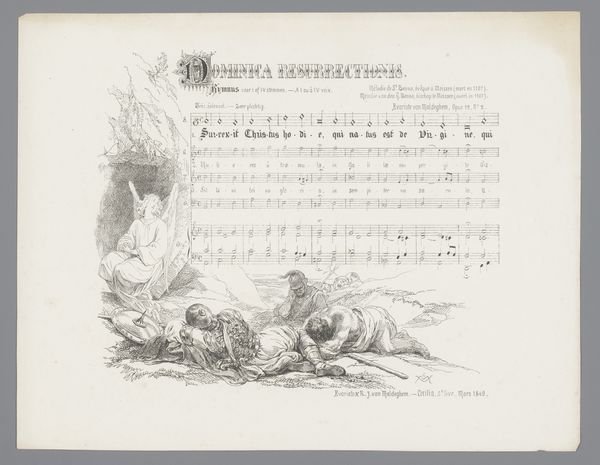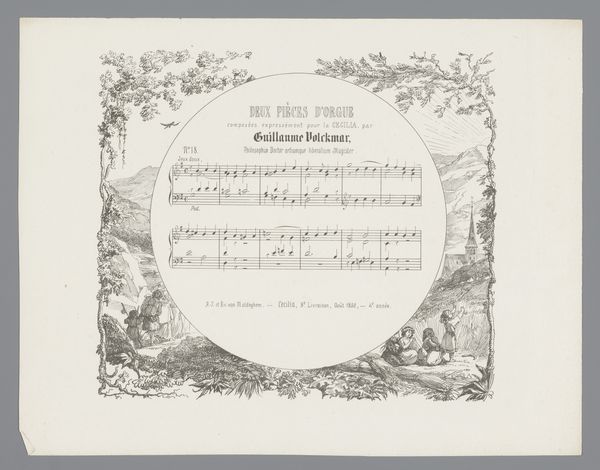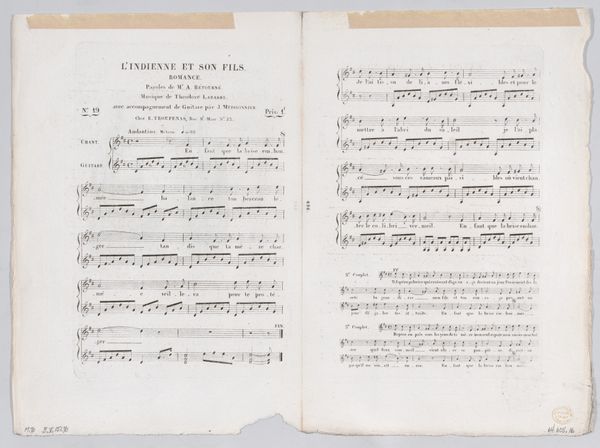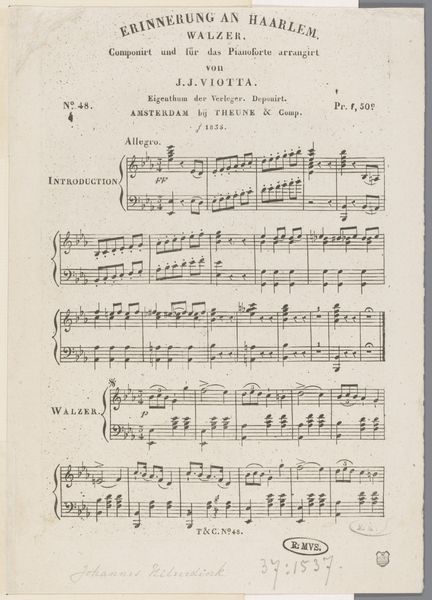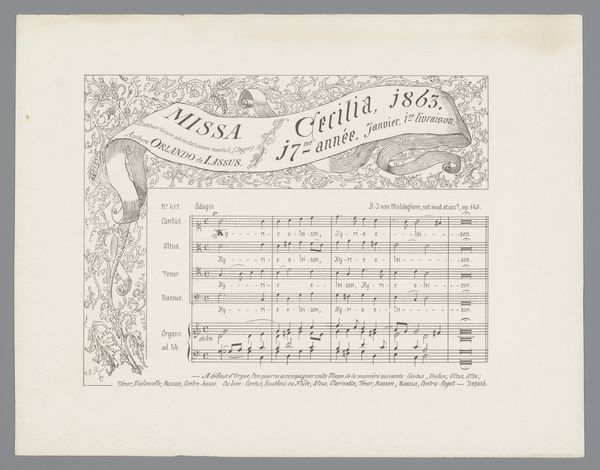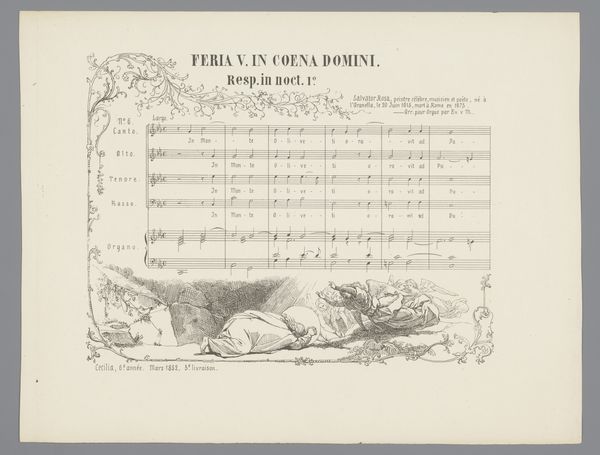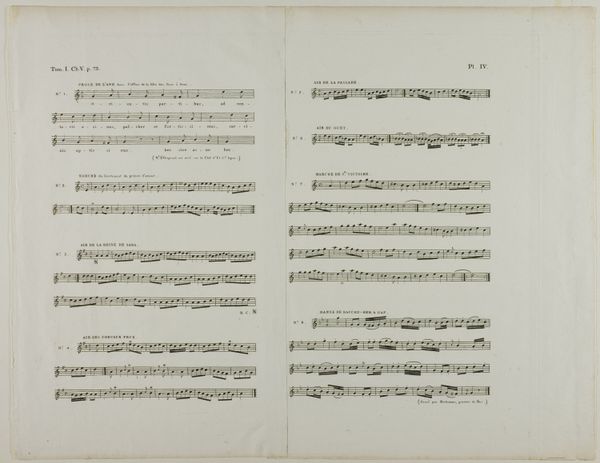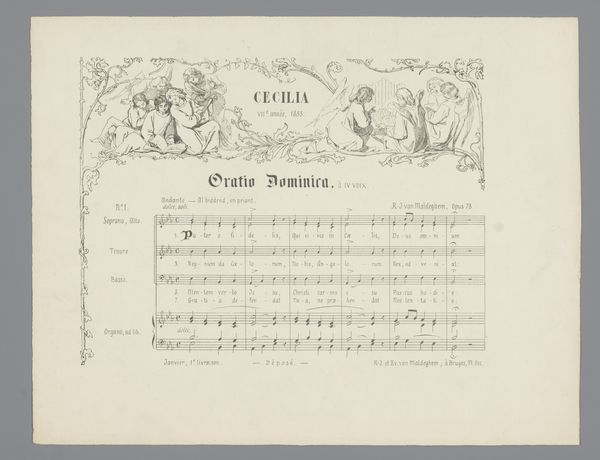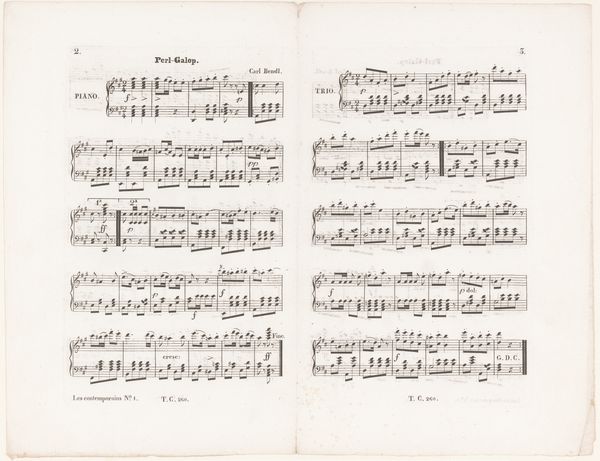
drawing, lithograph, print, paper, ink
#
drawing
#
lithograph
# print
#
figuration
#
paper
#
ink
#
romanticism
#
line
Dimensions: height 268 mm, width 347 mm
Copyright: Rijks Museum: Open Domain
Curator: Let’s discuss this lithograph by Eugène Van Maldeghem, “Engel knielt voor Maria,” created in 1849. We see an angel kneeling before Mary. What is your first take on it? Editor: Stark, almost utilitarian at first glance. It feels like a mass-produced devotional object. The heavy lines suggest the mechanical process of its creation, a deliberate, reproducible image meant for wide consumption. Curator: Precisely. Notice how Mary's posture and halo resonate with centuries of established Marian iconography, the pose conveying humility and grace. The angel mirrors this in adoration, connecting the viewer to the divine narrative. The twining vines with decorative initial further evoke illuminated manuscripts, so it ties into tradition. Editor: And what about the music notation surrounding the illustration? This suggests that the image served a very practical function. Who produced this and for what purpose? What does it tell us about 19th century devotional practices and print culture? It challenges assumptions about Romanticism. Curator: The integration of text and image gives a unity. It acts as a symbol, reminding of the sacred nature of music in worship. As a popular lithograph print, it helped democratize devotion by disseminating imagery that before then was only accessible to the elite classes who were able to commission original artwork. Editor: Yes, a form of religious consumerism taking root through lithography. What paper was it printed on and who produced the inks? Understanding the supply chain of materials used to create this lithograph would give us more insight into how the image served religious cultural function. Curator: The lithograph reflects not only devotion, but social conditions of nineteenth century Europe when Romanticism was at its peak. Also, its style emphasizes how religion shaped popular piety in culture through easily mass produced art pieces Editor: Seeing the piece from my perspective, it tells a lot about shifts in material practices. In our modern context we can see the object as one where religion and commodity blur. Curator: And I’m considering cultural endurance embedded inside symbolism, its relevance long beyond a specific moment. Thank you, it has been fascinating discussing the image's significance across time and its intersection with faith! Editor: It was fun discovering those intersections, especially with the influence that shifts in making could create social and religious change!
Comments
No comments
Be the first to comment and join the conversation on the ultimate creative platform.

